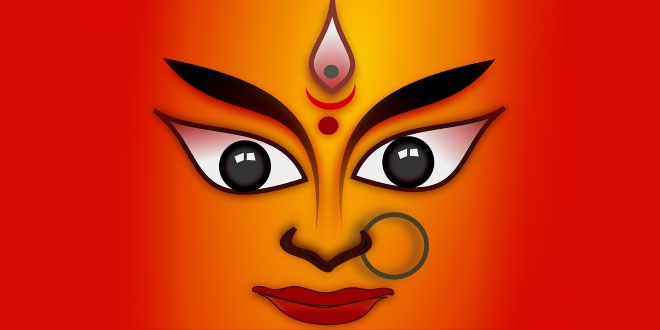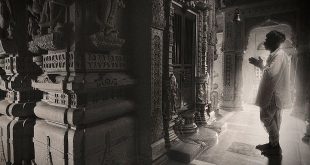Why we worship Mother Goddess on Navratri? We think this energy is only a form of the Divine Mother, who is the mother of all, and all of us are her children. “Why mother; why not father?“, you may ask.
Why we worship Mother Goddess on Navratri?
Let me just say that we believe that God’s glory, his cosmic energy, his greatness and supremacy can best be depicted as the motherhood aspect of God. Just as a child finds all these qualities in his or her mother, similarly, all of us look upon God as mother. In fact, Hinduism is the only religion in the world, which gives so much importance to the mother aspect of God because we believe that mother is the creative aspect of the absolute.
In Hinduism, Durga represents the feminine aspect and the shakti (energy / power) of the One God (The Brahman), as well as the empowering and protective nature of motherhood. From her forehead sprang Kali, who defeated Durga’s enemy, Shumbh. Kali (the feminine form of “Kaala” i.e. “time”) is the primordial energy as power of Time, literally, the “creator or doer of time” — her first manifestation. After time, she manifests as “space”, as Tara, from which point further creation of the material universe progresses. The divine Mother, Devi Adi parashakti, manifests herself in various forms, representing the universal creative force. She becomes Mother Nature (Mula Prakriti), who gives birth to all life forms as plants, animals, and such from Herself, and she sustains and nourishes them through her body, that is the earth with its animal life, vegetation, and minerals. Ultimately she re-absorbs all life forms back into herself, or “devours” them to sustain herself as the power of death feeding on life to produce new life. She also gives rise to Maya (the illusory world) and to prakriti, the force that galvanizes the divine ground of existence into self-projection as the cosmos. The Earth itself is manifested by Adi parashakti. Hindu worship of the divine Mother can be traced back to pre-vedic, prehistoric India.
The form of Hinduism known as Shaktism is strongly associated with Samkhya, and Tantra Hindu philosophies and ultimately, is monist. The primordial feminine creative-preservative-destructive energy, Shakti, is considered to be the motive force behind all action and existence in the phenomenal cosmos. The cosmos itself is purusha, the unchanging, infinite, immanent, and transcendent reality that is the Divine Ground of all being, the “world soul”. This masculine potential is actualized by feminine dynamism, embodied in multitudinous goddesses who are ultimately all manifestations of the One Great Mother. Mother Maya or Shakti, herself, can free the individual from demons of ego, ignorance, and desire that bind the soul in maya (illusion). Practitioners of the Tantric tradition focus on Shakti to free themselves from the cycle of karma.
 Kids Portal For Parents India Kids Network
Kids Portal For Parents India Kids Network







